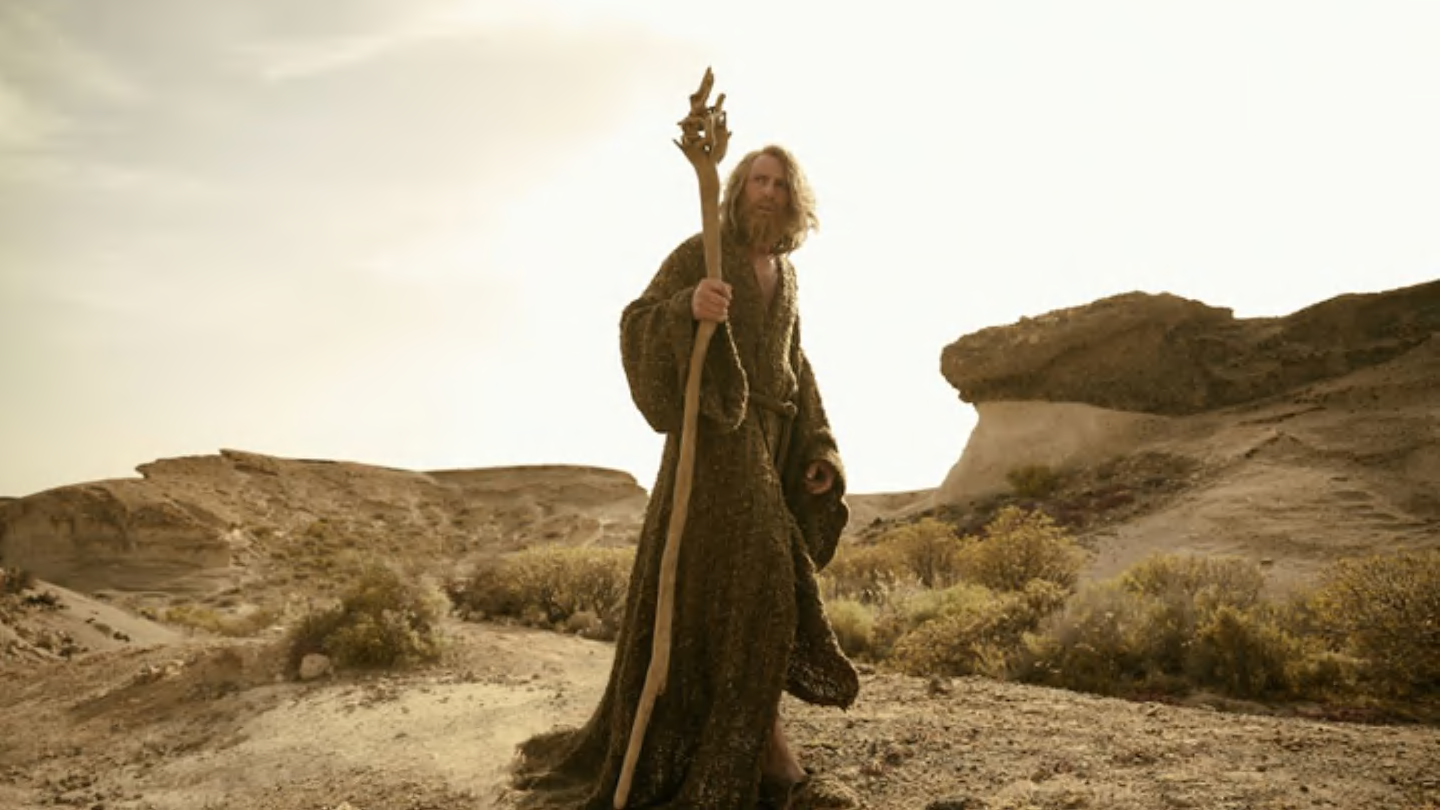
As a lifelong Tolkien enthusiast who has spent countless hours immersed in Middle-earth’s lore, I find myself somewhat perplexed by the recent statements regarding the “canon” of J.R.R. Tolkien’s works. While it’s true that Tolkien was known for his meticulous attention to detail and the depth of his stories, claiming there is “no such thing” as canon feels like a stretch, even for the most flexible interpretations.
The second installment of “The Lord of the Rings: The Rings of Power” concluded recently, marking an action-packed finale for this prequel series based on J.R.R. Tolkien’s beloved saga. Durin IV now rules Khazad-dûm as dwarven king, while the elven city of Eregion met its demise. Additionally, it was revealed that the Stranger—the enigmatic wizard from the series premiere with amnesia—turns out to be a younger manifestation of Gandalf, which many viewers likely anticipated all along.
In a departure from the established timeline of “The Lord of the Rings,” “The Rings of Power” is set during Middle-earth’s Second Age, a time period thousands of years prior to the main storyline. This inclusion of wizards in the narrative might seem unusual to dedicated fans of “The Lord of the Rings,” as according to J.R.R. Tolkien’s works like “The Silmarillion” and appendices from the original trilogy, the wizards didn’t arrive in Middle-earth until the Third Age. However, it’s worth noting that Tolkien’s ideas evolved over time; in later years, he contemplated the possibility of some wizards appearing during the Second Age.
In a recent interview on the official Twitter account for The Rings of Power, Dr. Corey Olsen emphasizes that when it comes to J.R.R. Tolkien’s works, there isn’t a strict canon. Instead, he suggests that Tolkien’s thoughts and ideas were constantly changing and developing over time.
1) The character, Gandalf, is here to inspire optimism across the land of Middle-earth. The Tolkien expert and I delve into the rich history and folklore surrounding this fascinating figure, as portrayed by J.R.R. Tolkien.
— The Lord of the Rings on Prime (@TheRingsofPower) October 3, 2024
Is there “no such thing” as canon in the works of J.R.R. Tolkien?
In a generous interpretation, Dr. Olsen might be referring to aspects of J.R.R. Tolkien’s mythology that were not fully developed or published during his lifetime. Notably, “The Silmarillion,” where the wizards are mentioned, was only released posthumously, with Christopher Tolkien editing and collating his father’s notes following his death.
But even then, saying there’s “no such thing” as canon in Tolkien’s works seems like a massive stretch. Tolkien was very thorough when it came to crafting his stories, detailing histories and even creating entire languages. The specificity and particularity of his stories is a big part of the reason they’ve endured in the imaginations of fans for so long.
Stating that there is no established “canon” in Tolkien could be seen by the creators of “The Rings of Power” as a justification for altering significant aspects of the original work, such as compressing the timeline of the Second Age to fit within a few years or months. However, given that Tolkien’s writings suggest the Second Age spans over thousands of years, it seems unlikely that he would have approved such a change. This argument might be used by the team to minimize backlash from fans, although it strains credulity to imagine Tolkien accepting such a substantial departure from his original vision.
The argument seems self-serving to me. Even Olsen contradicts himself a bit. He cites a line that Gandalf says in The Lord of the Rings books: “To the east I go not.” That seems to contradict the plot they’ve come up with for the Stranger in season 2, where he travels to the eastern land of Rhûn. But according to Olsen, by “the east,” Gandalf meant Mordor. “He meant, ‘Don’t expect me to go throw down with the dark lord at the gates of Barad-dûr.'”
As a devoted fan of J.R.R. Tolkien, it’s fascinating to note that while there isn’t an official “canon” in his works, Olsen posits a particular interpretation for the line “to the east I go not,” which is remarkably at odds with a common-sense reading. This interpretation, he suggests, aligns perfectly with the narrative of The Rings of Power, making it seem like a contradiction to me.
I don’t have a problem with the fact that “The Rings of Power” strays quite a bit from Tolkien’s original works; as long as the series is enjoyable, I’m content. However, it bothers me a little when they pretend to stick closely to the source material. It would be more honest if they simply admitted that changes are being made.
Read More
- Clash Royale Best Boss Bandit Champion decks
- Best Hero Card Decks in Clash Royale
- Brawl Stars December 2025 Brawl Talk: Two New Brawlers, Buffie, Vault, New Skins, Game Modes, and more
- Clash Royale December 2025: Events, Challenges, Tournaments, and Rewards
- Best Arena 9 Decks in Clast Royale
- Call of Duty Mobile: DMZ Recon Guide: Overview, How to Play, Progression, and more
- Clash Royale Witch Evolution best decks guide
- Cookie Run: Kingdom Beast Raid ‘Key to the Heart’ Guide and Tips
- Clash of Clans Meltdown Mayhem December 2025 Event: Overview, Rewards, and more
- All Boss Weaknesses in Elden Ring Nightreign
2024-10-07 18:41